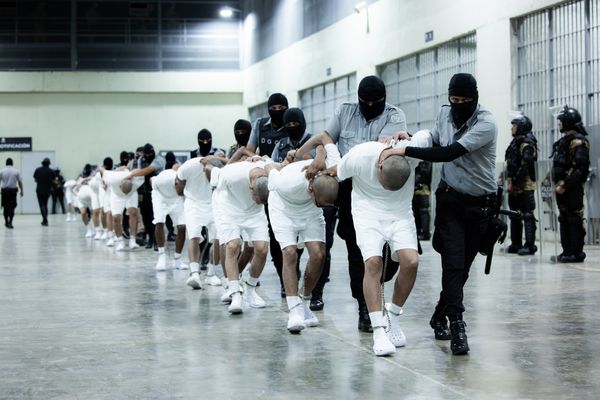
On Sunday, Justin Herbert went 40/47 for 405 yards and 3 touchdowns, finishing with the best completion percentage of any quarterback to throw at least 40 passes in the Next Gen Stats era.
The scariest part: he could have been even better.
Buy Chargers TicketsLet’s get to the film.
Tiny errors
We’ll start at the end with the play that ended up being the Chargers’ game-winning touchdown. On this play, Herbert connects with Josh Palmer, who wins vertically on the boundary and has plenty of space toward the end zone:
This ball is underthrown by at least 15 yards and should have been Herbert’s first interception of the season. It’s impossible to overstate how much space Palmer has behind Vikings corner Akayleb Evans. Instead, Herbert takes some off this throw and it hits Evans in both hands. The Chargers get lucky and it bounces into the hands of Palmer for LA to take the lead.
With the Vikings dialing up yet another Cover 0 blitz midway through the game, Herbert motions Joshua Kelley back into the backfield to adjust the protection. All five offensive linemen slide to the gap to their left, with Kelley responsible for the first rusher to the outside of right tackle Trey Pipkins. Unfortunately for the Chargers, that player ends up being Danielle Hunter, Minnesota’s best pass rusher, who now has a one-on-one with the running back. Kelley does move him off the spot, giving Herbert a window to step up in the pocket and hit Keenan Allen on a dig route into a wide-open middle of the field.
Hunter, however, has just enough space to get a hand on Herbert and force a fumble, neutering a potential gain of at least 15 yards. Credit to JT O’Sullivan of the QB School here, who points out that Herbert can tuck his right shoulder as he steps up to protect this ball and make the throw. Instead, it’s a lucky play to avoid a turnover.
Sometimes, it doesn't matter
What makes Herbert one of the best quarterbacks in the league is that even when the offense makes some of these mistakes, he has the talent to overcome it and turn it back into a positive play. Let’s start with his fourth-down touchdown to Donald Parham just before halftime:
This is the hardest I think I’ve ever seen anyone throw a football, first of all—credit to Parham for catching it. The play call here is a pretty classic redzone play: a flat route from Stone Smartt, which is the primary read, with mesh-like crossers from Parham and Tre’ McKitty while Gerald Everett runs the back line of the end zone.
Parham finds the soft spot in the zone and is far more open a second or two before Herbert eventually makes this throw. Still, Herbert clutches it and gives Vikings linebacker Jordan Hicks an opportunity to close on the play. As he releases the ball, you can see that Everett beats the corner behind the play and has plenty of open grass in front of him if Herbert feathered the throw over linebacker Ivan Pace for what would almost certainly be an easier touchdown.
Doesn’t matter, it still counts.
I’m including this play mainly because I think it’s hilarious. Allen had a franchise-record 18 catches on Sunday, many of which came because he’s Herbert’s most trusted target. Perhaps none of those receptions are more emblematic of that fact than this one. Herbert checks into a different play at the line of scrimmage, leading Allen to turn to the sideline and throw his hands up because he no longer knows what route to run.
The ball is snapped and Allen just loiters around his slot spot before deciding to turn back to the ball and drift away from the underneath defender, where there happens to be space because of the vertical routes from the other two Chargers receivers. Meanwhile, Herbert is avoiding a handful of Vikings rushers looking for anywhere to dump the ball off. It’s a first down for Allen on a broken play.
This is one of the throws where you want to see Herbert have a bit more arrogance regarding his arm talent. Mike Williams, LA’s best boundary receiver, is one-on-one up the sideline while Gerald Everett comes open on a shallow crossing route. At least it looks like he’s coming open.
Instead, the edge rusher lined up over Trey Pipkins drops into coverage as the replacement for the blitzing linebacker. It takes him a while to drop, but when he does, he’s right on top of Everett. Meanwhile, the corner on Williams has his eyes to the middle of the field and is breaking toward Everett even before Herbert cocks back the pass. That leaves Williams with space as safety Harrison Smith works over to carry the vertical route.
This is a throw Herbert has hit a thousand times, especially to Williams. In my opinion, it’s more open than the throw to Everett because I’ve seen Herbert hit that window. But again, it doesn’t matter because Herbert hits Everett in a tight window for the first down.
At the top of the screen, Keenan Allen (outside) and Quentin Johnston (slot) are running a post-corner concept. Allen runs a corner route, settling between the corner and deep safety. Johnston has the post, splitting the two deep safeties over the middle of the field.
The safety in the middle of the field, initially aligned in a robber role, drops into a deep zone for a Cover 3 look. Typically, that means Herbert should look away from Johnston on the post, a route designed to beat a two-high safety look. But Johnston runs this route with such speed that he’s well past the middle safety by the time he gets depth, leaving him open for a potential touchdown if Herbert pulls the trigger.
Seeing the safety drop into Cover 3, Herbert knows the correct thing to do is to come off the post, so instead, he casually throws an impossibly perfect hole shot to Allen that barely scrapes over the outstretched hand of corner Mekhi Blackmon for a big gain. But much like the 2nd and 7 play, this is a situation where Herbert could have been more aggressive.
Control at the line
One of the major changes Kellen Moore introduced when he became the offensive coordinator was giving Herbert control to change the play at the line of scrimmage. We’ve seen him do that already with the play where Keenan Allen got confused about what route to run. But Herbert also used that control to beat Minnesota’s historically blitz-heavy strategy:
Minnesota has seven players in the box here, with their other four defenders along a line about 10 yards off the line of scrimmage. Generally, teams that show this look drop at least one or two of those box players into the middle of the field to keep their defensive backs from having to play one-on-one on every receiver.
The Vikings either don’t know this or know and do not care, so they send all seven players after Herbert. They’ve been doing this all game, which is why before the snap, Herbert shows a signal to the two receivers at the top of the screen. The signal is their cue to check into a slant from the outside receiver while the slot presses vertically to serve as a blocker essentially.
When Joshua Palmer catches this pass, the entire middle of the field is empty. If Keenan Allen gets a better block, Palmer has at least 5-7 yards. Linebacker Jordan Hicks also makes a ridiculous play here, peeling off the block from Corey Linsley as soon as the ball comes out and punching out of Palmer’s arms for the first turnover of the Chargers season.
Exact same audible in almost the exact same situation. This time, we can see the signal better because Herbert is throwing the slant to the bottom of the screen, where Los Angeles has two receivers lined up. Minnesota puts an eighth player in the box and sends all eight of them because defensive coordinator Brian Flores is a psychopath. This time, it’s Allen on the slant and Palmer on the vertical press, and it initially looks like Allen could take this catch up the middle of the field for a huge gain. Again, the Vikings defensive back isn’t taken out of the play by the blocking slot receiver and he makes the tackle on Allen.
Stringing plays together
One of the other main features of Kellen Moore’s offense has been a more cohesive game plan – plays feel like they’re set up by other ones earlier in the contest. Plays like this also put Herbert in a better rhythm. The best example of this from the Vikings matchup is Allen’s double pass for an easy touchdown.
In both plays, you see the Chargers run a receiver in motion behind Herbert and a running back to give them a screen to the side of the field with two receivers. Los Angeles is careful to show this look with multiple different receivers as the motion man so that the Vikings don’t have a specific personnel package to look for. The beauty of this play is that it’s also effective against the aggressive pressure packages with off-coverage Minnesota had been running all game.
When the Chargers finally pull out the tricks, it looks the same as the screen passes earlier in the game. Allen motions from his wide alignment behind Herbert and Kelley, but Herbert throws the pass earlier this time. That gives Allen the ability to throw it again if he chooses. Minnesota’s defensive backs all crash down toward Allen because this is the umpteenth time the Chargers have thrown a wide receiver screen today. Palmer and Williams are well beyond the defense, setting up an easy touchdown.
One of one
We’ve touched on this already – Justin Herbert is one of the most aesthetically pleasing passers in the NFL. Some of the throws he makes are ones that only a handful of other players would ever think of even attempting. When he puts faith in his ridiculous arm strength, it results in some plays like these.
Akayleb Evans is lined up strangely far to the inside here, considering he has no safety help and has Palmer lined up outside him. Evans evidently isn’t expecting a vertical route from Palmer because he knows Minnesota is bringing pressure again, so by the time Herbert launches this ball, Evans is flat-footed as Palmer continues downfield. It’s a dot off Herbert’s back foot that goes for a huge gain.
The second clip here is the end zone view, where you see why Herbert has to throw this off his back foot to begin with. Kelley is in the backfield to help with protection against the blitz. With the pass rush leverage to his side, his first responsibility is the player in the A gap between Corey Linsley and Zion Johnson. That player is Hicks, who Kelley steps up to block, but Hicks runs directly into Johnson so that Patrick Jones II can run a stunt through the gap. It takes just long enough that Kelley rotates over to his secondary responsibility, the unblocked rusher off the left side. Jones now has a free lane to the quarterback, but Herbert drifts back and makes the throw before Jones can affect the play.
The first touchdown of the game is one of the best examples of Herbert’s truly elite arm talent. On the broadcast, Mark Sanchez compared this throw to a middle infielder turning a double play, and that’s truly what this looks like.
Herbert has an RPO here, so his footwork is set up to hand the ball off to Kelley. Josh Metellus crashes to defend the run, so Herbert pulls the ball back. This is normally where a quarterback would reset their feet before firing off the pass, but Herbert doesn’t have time for that because Metellus has changed his momentum to come after him now that Kelley hasn’t taken the handoff. Instead, he drops his arm angle and throws a submarine rocket with his feet still set the same way they’ve been for the whole play. The ball jumps to Parham, who walks into the end zone from his flat route.
Everything about this play is advanced quarterback play from Herbert. It begins with him pointing out the free rusher to running back Isaiah Spiller so the second-year player knows who to pick up in pass protection.
Nobody is open when Herbert hits the top of his drop, but Allen is coming open in the middle of the field as the vertical route clears space for him. The problem is that Spiller is losing his block and his man gets a hand around Herbert’s shoulder. While not a strong tackle, it’s one that has brought down quarterbacks of a smaller stature than Herbert. He fights through that contact, runs away from another free rusher who’s beaten an offensive lineman during all of this, and finds Allen in an open window for a chunk gain.
It’s only fitting that we end with one of the most insane throws I have seen in my entire life. The Chargers are running dagger with Allen and Johnston on the bottom of the screen, with the rookie running the vertical seam route and Allen running the dig. Herbert hits the top of his drop and immediately rolls left, which seems nonsensical given the route combinations on that side of the play. I think that it’s because the play is designed for Herbert to hit Johnston on the seam on a modified version of the rollout throw across the field we’ve seen Herbert make before. Johnston appears open on that route, but Minnesota’s safety sees it and bails back to that route since his teammates have Mike Williams covered at the sticks.
So, with Allen hanging out between Jordan Hicks and Byron Murphy in their respective zones at the line to gain, Herbert uncorks a throw. A throw to the opposite side of the field, across his body, over the middle. A throw that every QB coach in America tries to coach out of young players because it’s the easiest way to throw an interception as a normal person under center.
But when you’re Justin Herbert, you can make that throw and get that first down. Sure.







